
Stanford economist and Equitable Growth Steering Committee Member Raj Chetty and fellow researchers Nathaniel Hendren, Maggie R. Jones, and Sonya R. Porter released a new research paper yesterday, titled “Race and Economic Opportunity in the United States: An Intergenerational Perspective.” The paper analyzes the impact of race on intergenerational mobility, that is, the chances that children will earn more—or less—than their parents when they grow up.
The paper is the latest from Chetty and his fellow researchers at the Equality of Opportunity Project to examine the relationship between inequality, mobility, and opportunity in the United States. Equitable Growth thought its release was a good opportunity to revisit some of the key research findings of the project through seven charts, maps, and graphs that use their data.
One of the key findings of the paper released yesterday is that even when black and white boys are raised in families with similar incomes, black boys go on to earn less than white boys. This difference is noticeable and persistent across all incomes for boys, whereas there’s almost no discernable difference among girls. In fact, black girls go on to earn slightly more than white girls raised in families with a similar income. (See Figure 1.)
Figure 1
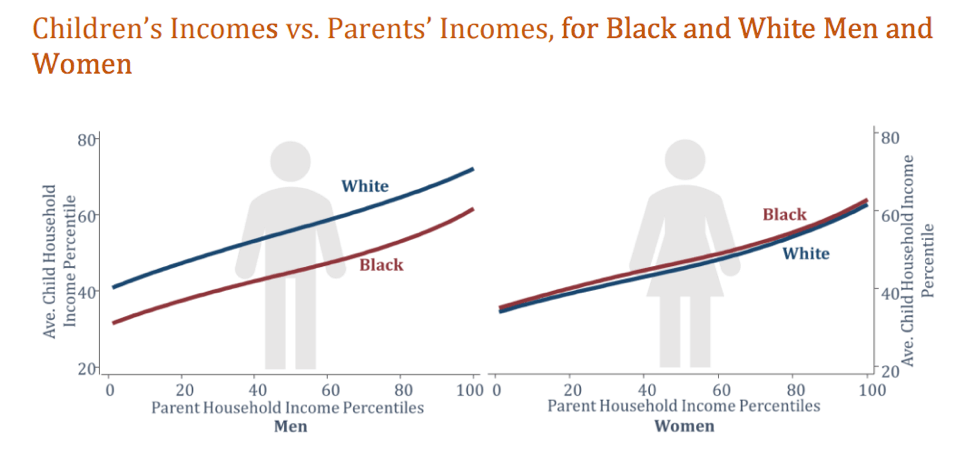
This raises serious questions about why outcomes vary across gender, including arguments that point to differences in cognitive abilities to explain differences in outcomes. As The New York Times noted in its coverage of the report, “If such inherent differences existed by race, ‘you’ve got to explain to me why these putative ability differences aren’t handicapping women,’ said David Grusky, a Stanford sociologist who has reviewed the research.”
One of the most commonly cited reasons for differences in mobility across different incomes and races in the United States is the importance of place. The importance of neighborhood-level effects such as the quality of local schools, whether families in a neighborhood are headed by two or one parents, racial segregation, and other factors have been explored by Chetty himself in prior research.
Some places boost kids’ mobility more than others, as maps such as the one below from the slides for Chetty’s paper with Nathaniel Hendren, “The Impacts of Neighborhoods on Intergenerational Mobility I: Childhood Exposure Effects,” illustrate. (See Figure 2.)
Figure 2
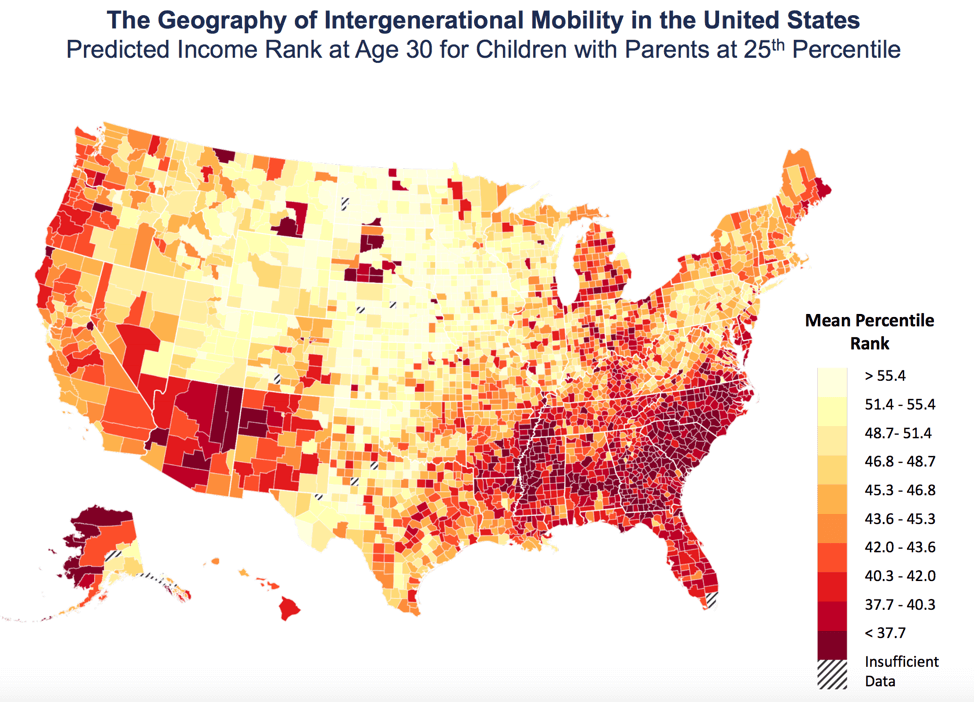
As the map above shows, mobility is low in some parts of the United States such as the Southeast, and higher in others such as parts of the Great Plains. It’s particularly interesting to compare the above map from Chetty’s earlier work on mobility with the maps breaking down mobility by race and place in his newest paper. (See Figure 3.)
Figure 3
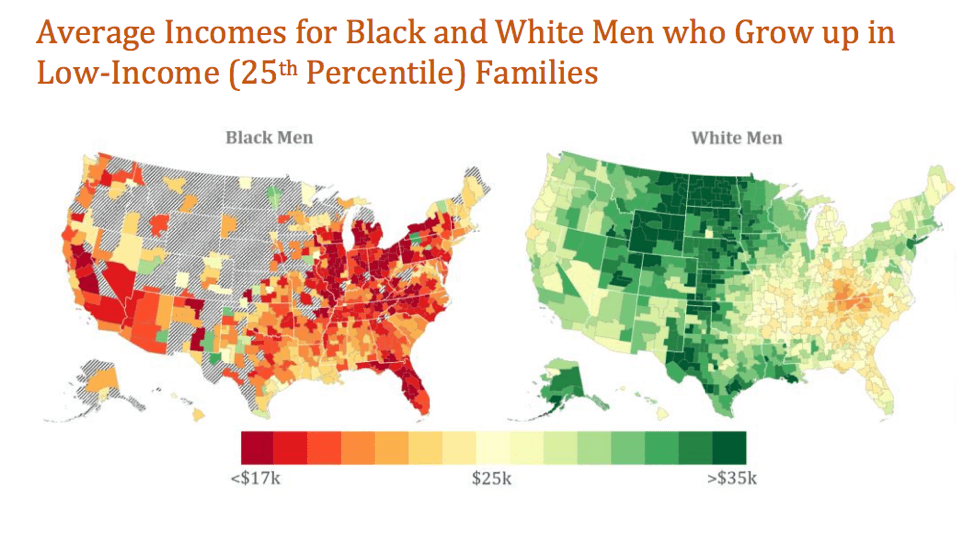
What the breakdown of these mobility maps by race shows is that the worst places for the mobility of white kids in low-income families are almost all better than the best places for the mobility of black kids in low-income families. As The New York Times noted in its coverage, “These new maps also suggest that part of the reason the Southeast looks bad for all children … is that the region is home to many black children who fare particularly poorly there.”
Even boys growing up in the same areas in families with similar incomes have dramatically different mobility later in life. In fact, black boys have lower incomes in adulthood than white boys in 99 percent of Census tracts. The authors note that, “These results reveal that differences in neighborhood-level resources, such as the quality of schools, cannot explain the intergenerational gaps between black and white boys by themselves.”
Chetty also has explored the impact of families’ incomes and race on innovation in a previous paper, funded in part by the Washington Center for Equitable Growth: “Who Becomes an Inventor in America? The Importance of Exposure to Innovation.” He and co-authors Alex Bell, Xavier Jaravel, Neviana Petkova, and John Van Reenen linked tax, school district, and patent records to identify the key factors in childhood that led to someone filing a patent later in life.
One of their key findings was that difference in ability—measured by test scores in early childhood—explained little in the difference in patent applications. (See Figure 4.)
Figure 4
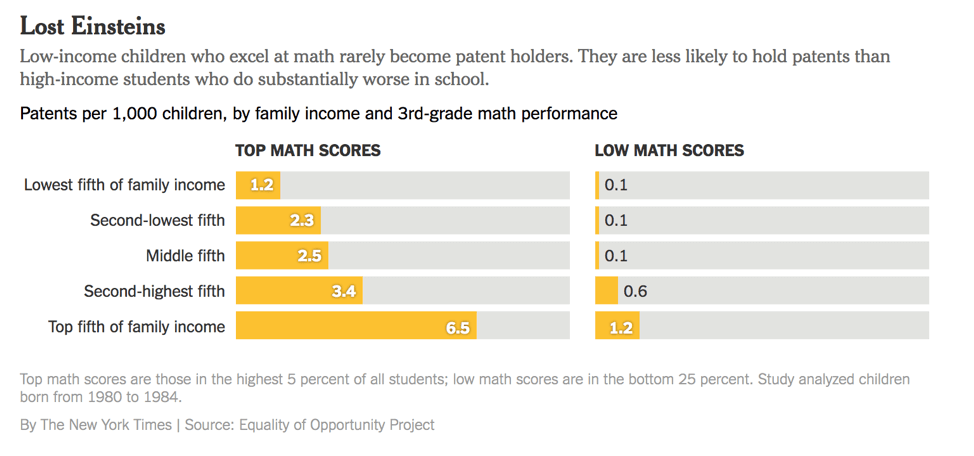
As the chart above from The New York Times coverage of the paper illustrates, kids from families in the bottom quintile of the income distribution with high math scores were only just as likely to hold a patent as kids with low math scores who were from families in the top income quintile. A similar dynamic plays out when looking at the question from the perspective of race. (See Figure 5.)
Figure 5
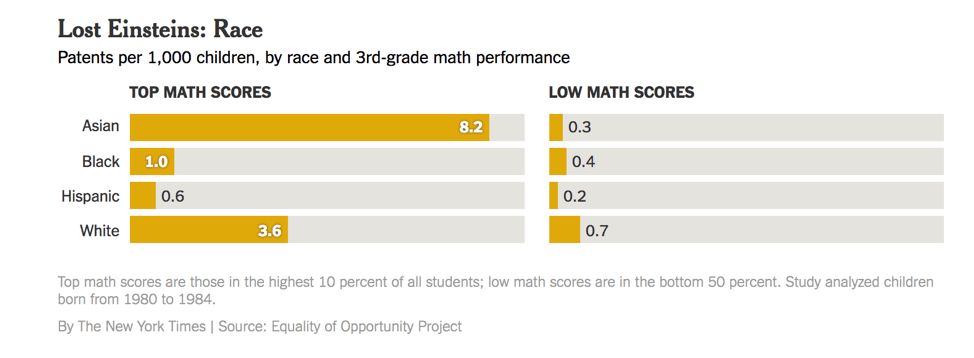
In other research, “The Fading American Dream: Trends in Absolute Income Mobility Since 1940,” Chetty and fellow researchers David Grusky, Maximillian Hell, Nathaniel Hendren, Robert Manduca, and Jimmy Narang examined the impact of economic growth and inequality on trends in mobility over the second half of the 20th century. (See Figure 6.)
Figure 6
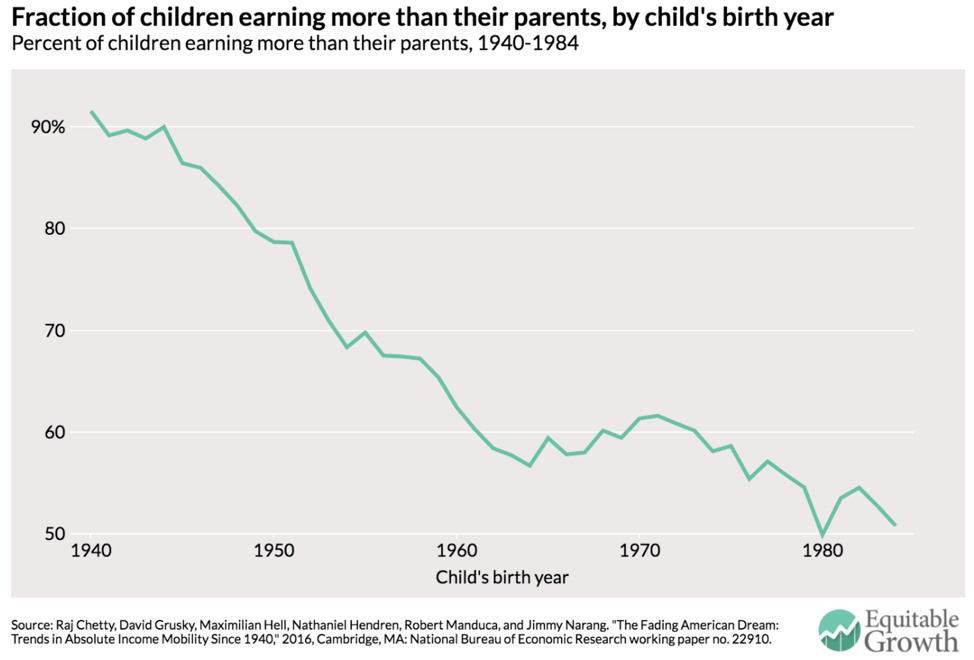
As the co-authors explained in a column they wrote for Equitable Growth about the paper, while 92 percent of children born in 1940 earned more than their parents, that was only true for 50 percent of children born in 1984. (See Figure 7.)
Figure 7

Two key differences between the start and end of the time period that Chetty and his co-authors analyzed (1940–1984) were that at the beginning of that period, economic growth was higher and income inequality was lower than was the case at the end of the time period. Examining the relative impact on mobility of boosting the former and lowering the latter, the authors found that simply returning inequality back to its earlier, lower rate would do more to improve mobility than boosting growth to the earlier, higher rate. You can read more about the importance of equitable growth for mobility in Nick Bunker’s Value Added on the original paper.
The research paper published yesterday by Chetty and his co-authors on race and mobility is just the latest by the researchers of the Equality of Opportunity Project to illustrate the role of factors outside of kids’ control—what neighborhood they grow up in, their parents’ income, their race—in determining their success later in life. It is also a powerful argument that policies that address income alone will be insufficient to ensure equality of opportunity for all Americans.
